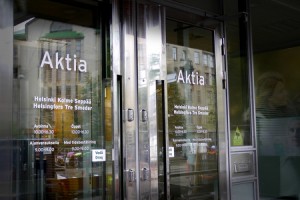Aktia in senior fixed rate first despite politics, beats rush
Oct 3rd, 2013
Aktia Bank priced its first public fixed rate senior unsecured transaction yesterday (Wednesday), a Eu300m four year deal that was well received despite Italian and US politics having cast a shadow over markets this week.
Aktia sold a Eu200m three year floating rate note in November 2012, but yesterday’s transaction was the first broadly marketed fixed rate senior unsecured transaction from the Finnish issuer.
“We did very limited marketing of last year’s deal, which was more of an extended club deal,” said Timo Ruotsalainen, head of funding at Aktia Bank. “This time we did a proper roadshow taking in many locations.”
 The deal was launched during a week in which markets were preoccupied with political risk, stemming from a government “shutdown” in the US and fears that ex-Italian prime minister Silvio Berlusconi would bring down the country’s governing coalition.
The deal was launched during a week in which markets were preoccupied with political risk, stemming from a government “shutdown” in the US and fears that ex-Italian prime minister Silvio Berlusconi would bring down the country’s governing coalition.
Primary market activity was fairly limited as a result, but Vincent Hoarau, head of FIs and covered bond syndicate at Crédit Agricole CIB, said that there were good reasons for Aktia to be able to proceed with a transaction.
“The deal was well prepared and Finland is a jurisdiction that remains en vogue,” he said. “Rarity value was also in play and the issuer was only looking for a sub-benchmark size, so they could go ahead with a deal despite the uncertainty about the US and Italian political situations.
“In addition, next week will be very crowded, so taking all these parameters into account there was no value at all in waiting for better markets.”
Ruotsalainen said that, in advance of the transaction, some investors had expressed doubts about the small issue size and prevailing tight spreads for senior unsecured debt, but that the deal went well.
“We gathered Eu300m of orders very quickly when the books were opened, and then as the spread was refined orders still grew to Eu530m,” he said.
A four year maturity is an unusual choice for an inaugural transaction, but it made sense in terms of the issuer’s redemption profile, added Ruotsalainen.
With markets opening on a stable footing on Wednesday morning and there being no competing supply, leads Commerzbank, LBBW and Nordea recommended that the issuer tap the market before an afternoon meeting of the European Central Bank and a public holiday in Germany today (Thursday).
They set initial price thoughts at the 90bp over area before moving to official guidance of 85bp-90bp, and priced the deal at 85bp over on the back of an order book of around Eu530m. The transaction was capped at Eu300m from the outset.
A lead syndicate banker said that senior unsecured trades from Norwegian savings banks such as Sparebank 1 SMN and SpareBank 1 SR Bank were the best comparables given the banks’ sizes and market positions.
A 2018 Sparebank 1 SMN transaction was indicated at around 78bp over and Sparebank Rogeland three-and-a-half and four-and-a-half year bonds were in the low 70s, according to the syndicate official, with Aktia Bank having a slightly lower rating from Moody’s than the Norwegian savings banks (A3 versus A2).
“We had to start north of those levels for a new issue premium and the rating difference,” he said. “We ended up at 85bp, which is a very good result.”
The bonds are trading some 3bp tighter today, he added.
Ruotsalainen said that it is difficult to compare Aktia’s senior unsecured pricing with that of its domestic peers, such as Pohjola Bank and Nordea, given that the latter are more regular, benchmark issuers, but that narrowing the gap over their spreads is something to strive for.
“In our covered bond business we have proven that we can be competitive with local issuers, and I look forward to being able to do the same in senior unsecured,” he said, “although we will be more of a sporadic issuer in senior than in covered bonds.
“Senior will be more of a rare treat than our covered bond issuance.”
Nordics took 53%, Germany and Austria 27%, the UK 15%, Asia 2%, southern Europe 2%, and the Benelux 1%. Asset managers were allocated 37%, banks 34%, insurance companies and pension funds 27%, and central banks and official institutions 2%.








